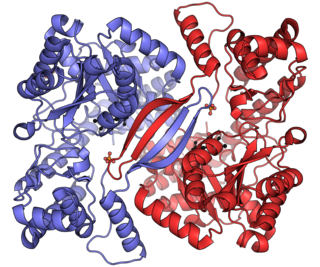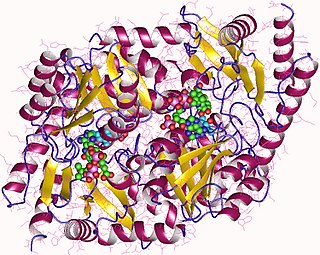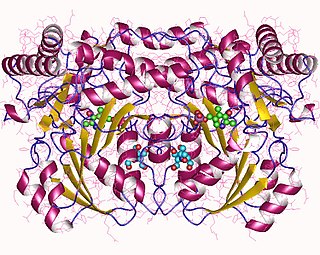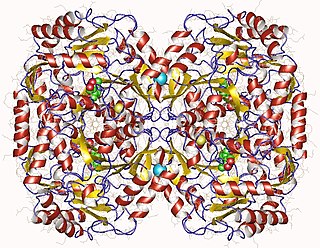| aminolevulinate transaminase | |||||||||
|---|---|---|---|---|---|---|---|---|---|
| Identifiers | |||||||||
| EC no. | 2.6.1.43 | ||||||||
| CAS no. | 9012-46-8 | ||||||||
| Databases | |||||||||
| IntEnz | IntEnz view | ||||||||
| BRENDA | BRENDA entry | ||||||||
| ExPASy | NiceZyme view | ||||||||
| KEGG | KEGG entry | ||||||||
| MetaCyc | metabolic pathway | ||||||||
| PRIAM | profile | ||||||||
| PDB structures | RCSB PDB PDBe PDBsum | ||||||||
| Gene Ontology | AmiGO / QuickGO | ||||||||
| |||||||||
In enzymology, an aminolevulinate transaminase (EC 2.6.1.43) is an enzyme that catalyzes the chemical reaction
- 5-aminolevulinate + pyruvate 4,5-dioxopentanoate + L-alanine
Thus, the two substrates of this enzyme are 5-aminolevulinate and pyruvate, whereas its two products are 4,5-dioxopentanoate and L-alanine.
This enzyme belongs to the family of transferases, specifically the transaminases, which transfer nitrogenous groups. The systematic name of this enzyme class is 5-aminolevulinate:pyruvate aminotransferase. Other names in common use include aminolevulinate aminotransferase, gamma,delta-dioxovalerate, aminotransferase, gamma,delta-dioxovaleric acid transaminase, 4,5-dioxovalerate aminotransferase, 4,5-dioxovaleric acid transaminase, 4,5-dioxovaleric transaminase, 5-aminolevulinic acid transaminase, alanine-gamma,delta-dioxovalerate aminotransferase, alanine-dioxovalerate aminotransferase, alanine:4,5-dioxovalerate aminotransferase, aminolevulinic acid transaminase, dioxovalerate transaminase, L-alanine-4,5-dioxovalerate aminotransferase, L-alanine:4,5-dioxovaleric acid transaminase, L-alanine:dioxovalerate transaminase, DOVA transaminase, and 4,5-dioxovaleric acid aminotransferase. This enzyme participates in porphyrin and chlorophyll metabolism. It employs one cofactor, pyridoxal phosphate.









